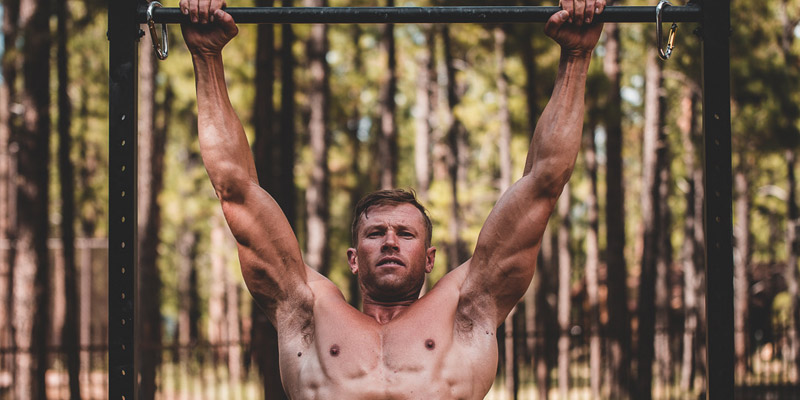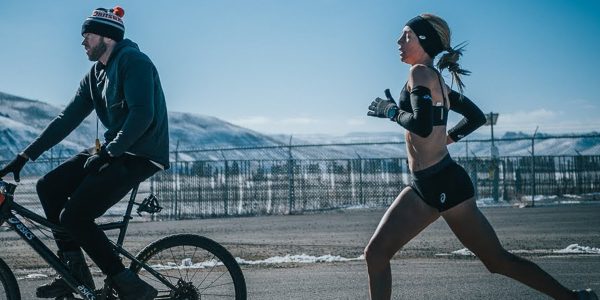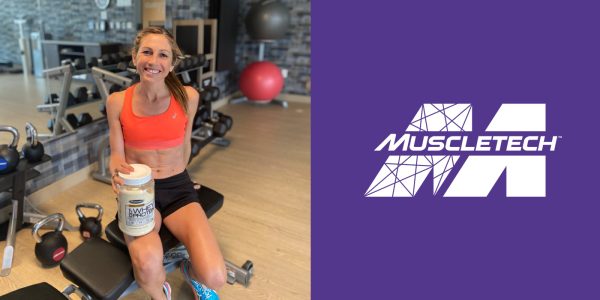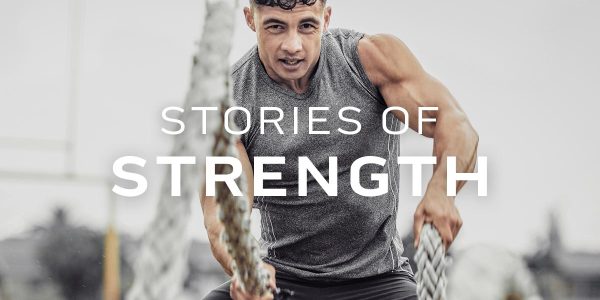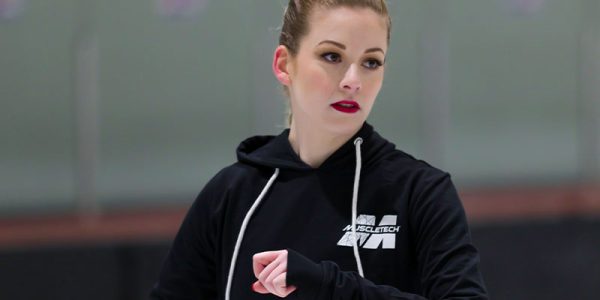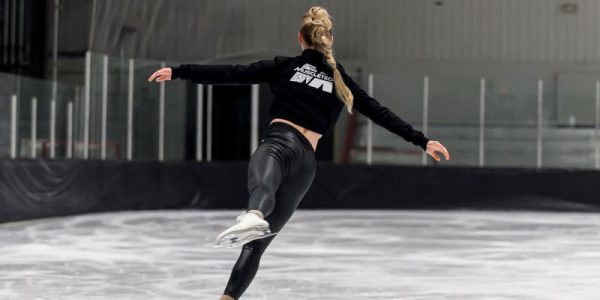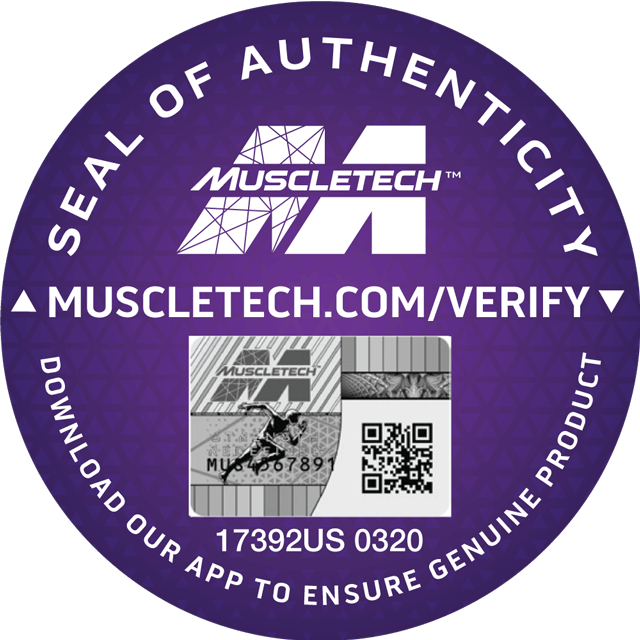Ryan Hall, runner of the fastest marathon ever by an American, has been announced as MuscleTech’s Official Run Coach. The retired long-distance runner also holds the U.S. record in the half marathon.
Hall won the Houston Half Marathon in 2007 with a record time of 59:43, becoming the first U.S. runner to break the one-hour barrier in the half marathon. He also won the marathon at the 2008 United States Olympic Trials and placed tenth in the Olympic marathon in Beijing. At the 2011 Boston Marathon, he ran a sub-2:05 marathon, completing 26.2 miles in 2:04:58. While Hall ran the fastest marathon ever for an American, the time isn’t an official American record since the Boston course isn’t eligible for records due to the course being point-to-point and a net-downhill course.
In January 2016, Hall announced his retirement from racing, citing the harmful effects it has had on his body. Upon retirement, he started weightlifting and increased his bodyweight, redefining his strength as a result of his post-career training. In 2017, he came out of retirement to run the 3rd Annual World Marathon Challenge in Sydney where he literally left his shoes at the finish line to signal the end of his running career. Since then he has stayed connected to the sport as a coach and also as the host of the Run Free Podcast.
MuscleTech.com had the opportunity to speak with Hall about his new role as MuscleTech Run Coach, running the fastest marathon ever for an American, and his transition into coaching. Hall also explains what the MuscleTech community should be doing in order to reach their training goals this year.

Q: Congratulations on being named MuscleTech’s Official Run Coach. You’ve experienced a lot during your record-breaking long-distance running career. What are some of your goals as MuscleTech’s Official Run Coach?
A: “So my goal, I think about this all the time when I’m sharing advice with other runners, is like if I could go back and do it all differently how would I do it? You make so many mistakes on your journey. I was running for twenty years and there were so many things I did wrong that really cost me. So, I think that’s what I’m most passionate about.
When you’re on the journey and you’re trying to see how good at something that you can get, you think it’s about you. Then when you get to the end of the journey you’re like, ‘I learned a lot of really cool things.’ And now I’m realizing that it’s not just about me. It’s about me helping other people on their journeys, as well.
There are more runners who participate in running in America than any other sport. There are so many runners out there. I think about all the mistakes that I made, and probably all the similar mistakes that other people are making like I did, so as a coach that’s what I’m really passionate about. I want people to do the things I did right and learn from the things that I did wrong. I want to help people take things to the next level.
What really captures me about sport, whether it’s myself doing it or coaching, is seeing progress. I love seeing the body change and adapt and grow. And I love seeing performances across the board getting better from generation to generation – world records going down, American records going down, people running faster and faster. That only happens when we come together as a community and we share information that’s helpful. Because some really great coaches coached me, I started at a much higher place than previous generations had the fortune of starting at. So, I was able to get to a lot higher place than those people got to. It’s kind of like whatever generation just finished that was their ceiling, but it should be our floor.
What I’m most passionate about is, ‘How can I help the next generation get to levels that I never got to?’ Because they’re starting out at a much higher place since they have way more knowledge in their back pocket as a result of other people who have come before sharing that information.”
Q: Take us through your running journey. Were you someone who always loved running as a kid or did your love of the sport come at a later age?
A: “I did not like running at all. I’ve always said that running is kind of like a secret club because it’s really hard to get into it because it’s not very much fun when you first start. No matter where you’re at, whether you’re 70 years old and just starting to run or you’re 10 years old and just starting to run, usually you’re not in very good aerobic shape. So, those first couple runs, even those first couple weeks or even months, can be kind of brutal and not a lot of fun. It’s one of those sports where it’s like the better shape you get in the more and more fun it becomes. So, you kind of just have to stick through those first couple of months. That’s where it’s helpful to have someone as a guide early on telling you that. Because if no one is telling you, ‘Hey, it’s going to get better. Like, trust me this is the worst part.’ Then you’re just like, ‘Why do people run? This is the worst.’
That was kind of my impression as I got into this sport. I was like, ‘What is the point? It’s so painful. It’s not very much fun. It doesn’t feel good. I’d much rather go chase a soccer ball or throw a baseball or a football than run around in circles around the track, or out at a road race.’ So, I did not like it all, but I was kind of built for it and gifted in it.
I got into it when I was in eighth grade. I was playing baseball, basketball, and football and I was five feet tall and 100 pounds. So, as you can imagine, I was not the ideal build for any of those sports… I didn’t really like running at all, I didn’t see a future in it, I didn’t want to get into it, but my dad always told me, ‘You can be a great runner if you want to be.’ He heard about me running the mile in PE and how I ran 5:27 as an eight grader up in Big Bear and set a school record without training, without liking it. But I ran hard. So, he knew I could be good, and he said, ‘You can be great at this if you want to, but the drive has to come from you.’ That’s something I’ve learned about being a coach and being a dad. Our role is to call out the gold in people, call out their talents and abilities, and tell them what we’re seeing, but not necessarily bend their arm to do it because if someone’s bending your arm to run, you’re not going to last very long in your journey.”
Q: Do you remember when the drive for your kicked in?
A: “For me, the will on the inside came when one day I was going down to a basketball game in 8th grade. We were driving down by the lake in Big Bear, and I remember just looking out around the lake and just thinking. I was just kind of filled with this desire that I felt that God kind of planted in my heart to run around the lake. So, I went for this real long, slow painful 15-mile run with my dad around the lake one Saturday morning in my basketball shoes. It wasn’t pretty, it took forever, and I had to stop and walk a bunch of times. It wasn’t like I just floated through it and was all like perfect – it wasn’t like a scene out of a movie, it was ugly. But I got through it and then fell in love with running after that. I really just loved the challenge of it. I loved the feeling of finishing that run, and of accomplishment. I was also filled with kind of a curiosity of, ‘How good at this sport can I be?’”
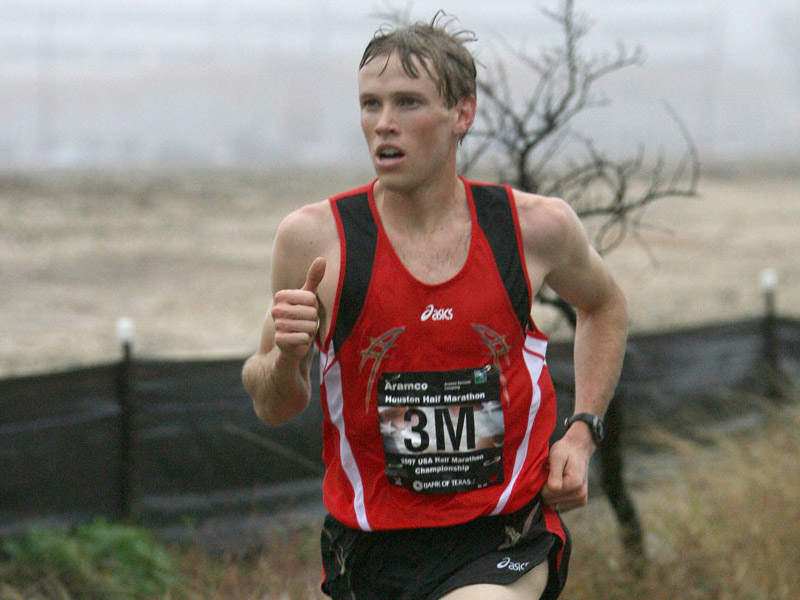
Q: You were the California state cross country champion during your junior and senior seasons at Big Bear High School, and finished third at the Foot Locker Cross Country Championships during your senior season in 2000. What was the progression like for you throughout high school? Were you always one of the strongest long distance runners even in ninth and tenth grade, or was becoming the California state cross country champion something you constantly had to train for and work at to achieve?
A: “The fun thing about running is that when you do it you see pretty rapid growth getting into it. It’s kind of like weightlifting in that way. When you first start out, it’s not necessarily fun or easy, but you see pretty fast results. So, I did improve pretty quickly as I got into the sport and definitely had some natural ability, some raw talent, and the body type for it so things did click pretty well. I wasn’t like the best kid in the country or anything like that, but I always had a really intense work ethic.
My dad was my coach and he would write my training on scratch pieces of paper and give it to me every week and I was always saying, ‘Dad, I want to do more than this. I want to do bigger workouts, harder workouts, run more miles.’ I was always pushing him to let me train harder.
So, I think it was that mentality over time. It took a while for it to take hold for me, and I think a lot of looking at high school kids and athletes, I know I kind of fell into this trap of wanting to improve at the same rate as other high school kids who had come before me. I’m speaking specifically of Jim Ryun, who was the first high school boy to break 4-minutes in the mile. I wanted to improve just like him. I wanted to run the same speed he did when he was a sophomore, and the same speed he ran when he was a junior. And really that’s not realistic because as high school athletes we all develop so differently than each other.
I was a really late bloomer. So, I stayed really small, and was underdeveloped. So much so that my parents took me to a doctor because they were afraid that I wasn’t growing properly. The doctor said I was fine, but just a late bloomer. The doctor said I’d shoot up. So, eventually I did hit a big growth spurt before my junior year in high school. So, I went from a good runner, to after hitting that growth spurt that was my big breakthrough going from 4:22 for 1600 meters down to 4:05. And that kind of put me in rare territory where there wasn’t a lot of kids in the country who were running that fast.
As just kind of a note to athletes, let your improvement curve be what is right for you, not just comparing yourself to other people. It can be really discouraging when you compare yourself to other people and you’re not keeping pace with them. When really it’s kind of like a door – you just have to keep pushing against it, pushing against it, and eventually it’s going to open up for you. But you can’t necessarily know when that’s going to be, especially as a younger athlete.”
Q: In college you found success at Stanford University where you were named the Pac-10 Cross Country Athlete of the Year after leading Stanford to the NCAA Championship. But you also had to overcome a number of injuries during your college career. So, based on your experience, what do you think are the most helpful tactics to prevent injuries?
A: “I actually just did a whole podcast on this topic on the Run Free Podcast so if you want to hear the hour-long answer you can definitely check that out. Injuries are one of the toughest things that runners are going to have to navigate on their journey. Just given the nature of how much pounding there is in running it’s fairly traumatic on your body. Then as an elite athlete, you want to be light and fast, but not weak because otherwise you’re going to breakdown and get injured. So, you’re trying to thread this really small eye of a needle. It’s a very tricky thing to balance. It’s one of those things where I learned a ton of stuff on the back-end that I wish I could go back and do differently now.
But I would say that my dad did some good things with me early on. He got me into some lifting. He wasn’t a big fan of using free weights, but we were doing a lot of band work – doing resistance exercises with those. Then I was doing a ton of hill work, which I think definitely is a helpful thing to do when you’re trying to get strong in general, especially for youth. It’s like weight training without using weights. It’s obviously very running specific because you’re running. I did a ton of reps.
Big Bear Lake is a resort town. We used to live about a mile away from Snow Summit Ski Resort. So, in the summertime, like two or three times a week, I’d jog the mile to the bottom of the ski resort and then I’d actually just run straight up the runs. We’d be going up double black diamonds, like the steepest part of Big Bear. There was this one run called The Wall and we’d always go up that way and you’re barely moving. It’s “running,” but you’re not moving fast at all, especially at 8,000 feet. That really did a good job of keeping me healthy.
Other things that were really helpful for me growing up were running on soft surfaces. When I talk to runners, I say, ‘All of your easy runs should be on either grass or dirt. If you have to choose between asphalt and concrete make sure that you’re on asphalt because concrete is way harder than asphalt.’ Little tricks like that can really save the pounding on your legs.
You also just have to know what your body can handle. So, you do the strength training. You make sure that your nutrition is on point and that you’re getting enough protein so you’re getting enough recovery, and you’re retaining muscle. Because doing marathon training, we’re getting up to 130 to 140 miles per week. It becomes very, very catabolic at that point. So, regular protein intake was so, so important throughout my career. And the times when I wasn’t getting enough protein I can literally look at pictures of me and I just look really weak and muscularly like everything is gone. Again, it’s this fine balance where you don’t want to be carrying on extra muscle, but you do want enough muscle to stay healthy, to be strong, and to have some power in your legs, as well.
And having the right pair of shoes. I know I’ve gotten injured just from simply wearing the wrong pair of shoes before. So, there are little tricks and tips that are super helpful to help you stay healthy.”
Q: After college you went on to have an incredible professional career. Some of your highlights include becoming the first U.S. runner to break the one-hour barrier in the half marathon, winning the marathon at the 2008 United States Olympic Trials and placing tenth in the Olympic marathon in Beijing, and then running a sub-2:05 marathon in 2011, which is the fastest marathon ever run by an American. When you look back at your legendary career, what are you most proud of and why?
A: “That’s a tough one. I would say the day when I feel like I hit it the best was probably when I ran 59:43 in the half marathon. That was just such a fun day, and I think all runners can relate to this, like you just have your certain one or two days that you can look back on your career and just be like, ‘Man, I just felt like I was floating on clouds the whole time.’ It just felt easy. It felt like I was in heaven. The faster I went, the easier it felt. That was the sensation, not only in the race itself, but also in the last couple of weeks leading up to the race. I knew something special was coming. I never felt that springy before. I felt like I had springs in my shoes. It was crazy. So, that was probably the most fun performance for me, and the day where I feel like I got a real taste of what the upper limits of my body’s capabilities were.
Probably the one I’m most proud of is when I ran 2:04:58 in Boston in 2011. The reason why is because that was coming off of a big disappointment in 2010 when I was training for the Chicago Marathon and trying to go after the American record there, but training just wasn’t clicking. My body got super rundown and I ended up not even making it to the start line. I had to drop out before I even got there. That was the first marathon I ever didn’t make it to the start of and a huge disappointment.
And then not only that, I got back into training and training was going super well, I was getting really fit, really excited for Boston coming up and then a month before Boston I just tanked a half marathon in New York and ran terrible. It was one of those when it was really hard to take as an athlete because I didn’t know why. You know, when you can look at your performance and be like, ‘Oh, well my stomach was messed up. Or I had a hamstring issue,’ like those things you can be like, ‘There was obviously something wrong and that’s why I ran poorly.’ But in this one, training was going perfect, I was in great shape, I was trying to run fast, I didn’t make any mistakes out in the race, but I just felt terrible.
I was so bummed out after that race I walked all the way back from the finish line in Battery Park back to where we were staying close to Central Park. So, it was a super long walk back through Manhattan. I was so bummed, couldn’t figure it out, was so frustrated, and it was one of those things where the next day I just woke up and was like, ‘OK, I just have to put that behind me. It’s a mystery.’ And there’s so much mystery in running. Something I’ve actually fallen in love with is being OK not having all the answers.
You know, as a coach, I’m still learning, too. There are things I can accept that I may never understand. They will just remain mysteries. That’s part of being a human being and doing sport, and especially with running where sometimes you have great days and you can’t figure out why, and sometimes you have terrible days and you can’t figure out why. It’s important to learn to embrace that and be OK with that. To actually see that as one of the beautiful things about our sport. Because if you look at it in a positive light, every time you stand on the starting line you have no idea what’s going to happen. You kind of do based off of your training, but I’ve had really great races off of really bad training and vice versa. So, it’s a really interesting place to be on the starting line of any race where anything is possible.
Then showing up at Boston a month after that, it was crazy because after that bad race, actually something turned on inside my body and I started feeling amazing in training, like even better than I had been since my training had been going really well. But it even went up to another level after that bad race. And then we hit a tailwind day. I remember talking to Bill Rodgers who won Boston four times. He also won New York four times, too. We were out on the course one time doing some promo work and he told me, ‘You know, once about every ten years you get a wicked tailwind on the Boston course. When you do, you can really fly.’ And so I was always waiting for that. I had run Boston a couple of years before that and was just hoping that I was going to hit one of those magical days. Then fast forward to the starting line in Hopkinton, I’m standing at the starting line and I’m looking at the American flag, they’re playing the National Anthem, and it’s just blowing the exact direction we’re running and I was just licking my chops. Like, I don’t care that I’m coming off maybe the worst half marathon I’ve ever run in my life, I’m not letting one mile go by without just milking every second out of this course that I can get. Because once every ten years – that’s how often these opportunities come in Boston. So, I was like, I’m going to make the most of this.
So, I went straight to the front and just ran as hard as I could the whole race. We were rolling. We came through the halfway mark and the race director, Dave McGillivray, was on a motorcycle and he came through the halfway and he saw the clock at halfway that they had setup. And he radioed his clock guys and was like, ‘Hey, you guys got the clock wrong.’ It said like 61:50 or something like that. And they were like, ‘No, no. That’s right. They’re rolling. They’re running fast.’
So, we were running way faster than world record pace at the time, and way faster than anyone had ever run on the Boston Marathon course. And that was really just such a special day too hitting a big PR off of a big disappointment. Running 2:04:58, breaking 2:05:00, that was a huge lifetime goal that I had. So, to do that was super, super special. But what I’m most proud of about that performance is actually, if you see a picture of me finishing that race, like I have my arms open and I’m yelling. I’m like so stoked. And yet, I was fourth place – fourth place with the fourth fastest time ever run at the Boston Marathon in over 120 years. But I was so excited I felt like I won the race.
As I look back at my career, I think about the things that stole my joy as an athlete and it almost always goes back to comparison. Anytime I was comparing myself to other people, I wasn’t enjoying the sport whether I was winning or losing. It was just always, ‘You’ve got to beat the next person who’s better than you, and then beat the next person. If you lose to the person who just beat you then you’re bummed out because you’re not as good as them. Sports can very easily just turn into this big comparison trap and comparison to me is like the biggest killjoy in sports and a big killjoy in life in general.
And so that day, to run the fourth fastest time ever at Boston and finish fourth, and yet still feel like I won the race was kind of the moment when I felt like I got it internally. Like, that’s what it’s about. It’s about personal excellence. How good at this thing can you get? How much can you milk the talent out of yourself and the people around you who you’re competing against? The people you’re competing against are really just there to bring out the best in you and you’re there to bring out the best in them.
That’s when sports are really beautiful and really fun whether you’re fourth place or first place or last place. If you get 100 percent out of your body and you have this mentality while you’re out there like, ‘Hey, I’m going to make the people around me better and the people around me are going to make me better,’ then sports are just a lot of fun.
After a huge internal battle, I learned the lesson that sports are not about comparison. It’s not about, ‘How much can I deadlift compared to someone else?’ It’s about me seeing how good I can get. It’s about personal excellence and seeing the beauty that comes out when we hone our craft, when we do all the little things right. Then when everything comes together perfectly on the day, it’s a really special experience. That is probably the one that I’m most proud of for all those reasons.”
Q: Can you take us through your mindset and what you were telling yourself as you became the first U.S. runner to break the one-hour barrier in the half marathon, when you won the 2008 United States Olympic Trials, and then when you ran the fastest marathon ever by an American?
A: “There are a lot of different things at different stages in the races. So, typically early on I’m trying to relax as much as I can. One of the things I picked up during my time at Stanford was how important relaxation is. So, when we’d be competing in cross country for example, we’d be talking to each other. Not so much to try and help each other, or relay important information, but it was more to help us relax. Like when we’d talk to someone, we’d be like, ‘Oh, OK. I’m not so tired.’ By talking to your teammates it kind of distracts you from the pain a little bit. So early on in the race it’s a lot about just relaxation. Relaxing through your breathing, through how you’re holding yourself – relaxing your shoulders, your arms. It’s like the sprinters you see in the Olympics. Their face is just bouncing when they’re running. Fast is relaxed and relaxed is fast. That is a huge thing that I’m thinking about early on in those races.
I’m also thinking about getting in my nutrition early on. In the marathon, taking in your nutrition during the race becomes more and more important. So, thinking about getting in my calories, getting in enough water early on, even if I don’t feel like it, forcing it down. Then obviously you’re aware of the pace. I’m paying a lot of attention to my effort level.
Typically when I’m training, I’m actually visualizing myself in the race while I’m out training. So, if I’m back home in Mammoth Lakes or here in Flagstaff, I’m picturing myself running in Boston, running strong, running fast, running with the leaders, like kind of seeing my magical day all happening. Whereas when I’m in the race, I’m picturing myself back in training. So, it’s kind of like you’re visualizing either way. Why it’s helpful for me to visualize myself in training is it helps me relax – going back to the ‘relaxed is fast’ thing. It helps me relax and it also helps me find that effort.
A big thing with runners is, How do you know what pace you can manage for a given distance? You have to learn how to spend your energy. You learn how to do that through training. Then when I’m in the race I’ll literally sometimes close my eyes while I’m out there running, and regardless of what my watch is telling me, regardless of how fast I’m going, or what my splits are, I’m relying most on the sensation of can I hold this pace for 2 hours and 10 minutes, or for a half marathon that’s going to be an hour long?
So, I’ll picture myself back in training and be like, ‘If I was running a two hour hard run right now could I sustain this effort level?’ And if the answer is, ‘Yes,’ then you keep going with it. That’s literally kind of what happened to me when I ran the American record in the half marathon. I was running way faster than I was supposed to be running, faster than I was planning on running, and yet it felt very sustainable. It felt like how I felt with training. So, I was like, ‘OK. I don’t care what the watch is saying.’ It was a little bit scary for me to look down and see some of these splits. I remember my third mile was like 4:27 and I was like, ‘That’s really fast for a half marathon, but it feels right.’ So, kind of relying on that body sensation I think is one of the most important thing runners can learn, especially early on in the race.
Then the last third of the race, my coach Terrence Mahon used to tell me, ‘You run the first 20 miles with your head and the last 6 miles or 10K with your heart.’ And that’s really true. So that’s when you start pulling on all of those motivational thoughts that you use in practice and training. So, some of the things I’d be thinking about are my family, my wife, my extended family, and people who are watching me in the race. I’d also be thinking about why I was out there to run to begin with. And we have our own foundation, The Hall Steps Foundation, and we do work in Africa. So, I’d be thinking about the different projects we’re supporting and the kids that I’m running for.
And also simple mantras – I have a whole podcast episode on mantras and how powerful those can be because the thing is that last 10K you’re so tired, you’re so beat down that often times your mind can even get in the way. So, you need super simple mantras like, ‘Fast and relaxed’ or ‘There’s more there’ because your body is trying to trick you. It’s trying to tell you there’s nothing left and there’s always something else there. So, ‘There’s more there’ is one of my favorite ones. I’ll say that over and over again in my head. Or ‘Just relax, just relax, just relax.’ Mantras like that are super helpful.
Then sometimes just turning the mind off completely, just not thinking. I remember hearing an interview with Michael Phelps and they were asking him, ‘What are you thinking about when you’re in the pool?’ And he said something like, ‘I’m not thinking about anything. I’m just in the moment doing what I trained my body to do.’ There’s definitely a part of that where you’re out there deep in a marathon and you’re just putting one foot in front of the other as fast as you can. It’s really that simple. Sometimes as runners we can overthink things, make things too complex when really we just need to get back to the beautiful simplicity of running.”
Q: Athletes rarely seem to retire on their own terms. After announcing your retirement from professional running in January 2016, and then coming out of retirement to run that one last marathon in 2017 – literally leaving your shoes at the finish line, was that your way of ending your storied career on your own terms? And what was that experience like for you?
A: “So, I kind of told you the story of getting into the sport and doing that 15-mile run around the lake and that was a really epic way to get into running. You know, most kids don’t start out at 13-years-old doing a 15-mile run around the lake as their first official run. And yeah, the sport, it didn’t end the way I wanted it to. I always pictured running one last really good marathon, having it be a good race, taking my shoes off at the finish line, and walking away barefoot. I kind of stole that from Olympic wrestlers. That’s what they do when they wrestle their last match. They take their shoes off and leave them on the mat and walk away barefoot just as a symbolic way to be like, ‘I gave everything I have. There’s nothing left to give and now I’m moving on.’ And I think it’s important to have that sense of closure, especially for something that’s been so life giving and special. It’s kind of like grieving the loss of someone almost. It’s like this was a real, living thing that was a big part of me. It was my craft, it was my passion, and I need a way to say goodbye to it.
It’s funny, when I got into the sport I was mentioning I didn’t like running. And then I retired and I was into lifting, I was hardly running at all, and I didn’t even like running anymore. I had zero desire to go for a run. I was fully into the lifting. Then my buddy, Matthew Barnett, who’s the pastor at the Dream Center down in LA, texted me and told me about this world marathon challenge that he was doing – 7 marathons in 7 days in 7 continents. And I had this same kind of feeling that I had when I was that 13-year-old kid looking out at the lake. It was just this seed of a desire, something just captured me about that, and even though I hated to run the same way I hated it when I was 13-years-old, something about it just grabbed me. I felt that I had to do it.
I texted him back and said, ‘Hey, if you want company let me know. I’d love to go.’ (Laughing) It’s one of those texts when you send it and then you’re like, ‘Oh, undo, undo, undo!’ (Laughing) I was like, ‘Did I just do that?’ Then the rest is history. I ended up doing that challenge with Pastor Matthew and it was such a cool experience. I mean, running the first marathon in Antarctica, and then I didn’t really train for it so I got to experience what it feels like to run a marathon very undertrained, which is totally different than my other experiences. So, it was cool to see the sport from kind of a different angle, and perhaps an angle that most people can relate to a bit more. Most people don’t have the luxury of being able to train full-time to run a marathon. Most people are doing it while working a full-time job so I got to experience it from that end a little bit.
You know, it wasn’t a pretty last marathon. I got a stress reaction on Day 5 in Morocco in my hip. So, I had to get through the next two with a stress reaction. So, I kind of limp-jogged through the next one in Dubai and got through it. Then when I tried to stand up and get off the plane, because I slept all the way from Dubai to Sydney, getting up, taking that first step felt like I got zinged with a whole bunch of pain in my hip. And I was like, ‘This is going to be a really long night.’
So, we started that marathon I think at like one in the morning and I finished right when the sun was coming up like six or six-thirty in the morning. I think it was like a five-and-a-half hour marathon. I was out there for what felt like 10 days, but nonetheless I was surprised by how emotional I was at the finish line. The trip – I think we had like 30 runners and then we had staff, so there were maybe like 50 people there – it was a pretty small event, but I crossed that finish line and took my shoes off, and I was almost moved to tears as I was walking away. It all really kind of hit me. Like the finality of it all, but more appreciating the beauty of it. Appreciating the beauty of what running did for me and for my life. It brought so much goodness to me as a person, as an individual, the character traits it developed in me, and more than anything the people that I got to cross paths with as a result of that. I met my wife at Stanford, who is still a runner. I had so many amazing coaches, other fellow athletes I got to compete with on Olympic teams or at Stanford or professionally on the team, and those were the things that I still take with me to this day. They were like the most dear part of my running career.
Saying goodbye to all that was an emotional moment for me in Sydney. But also kind of a cool full circle story where it kind of started out with an epic adventure and then it closed with an epic adventure of seven marathons in seven days in seven continents.”
Q: When you retired from professional racing, you mentioned the harmful effects that it had on your body; talking about the price you had to pay for goals worth achieving. Since retiring, you’ve been lifting weights and are committed to getting bigger and stronger. What do you want the MuscleTech community to know about diet, nutrition, and training that you’ve learned along your journey?
A: “Nutrition is the biggest component of training. Whether you’re a runner trying to maximize your performance or you’re a weightlifter, powerlifter, or bodybuilder, it continues to blow my mind to this day. I’ll do the same exact routine, spend the exact same amount of time in the gym and based on my nutrition either I’ll be losing weight and losing strength, or I’ll be gaining weight and gaining strength. Nutrition is the only factor that changes and the results are that dramatically different where I’ll be losing strength, I’ll be losing size, or gaining strength and gaining size. It’s 100 percent just nutrition. I can’t emphasize that enough.
I had an experience, you know I mentioned dropping out of Chicago and getting really, really lean and not having enough muscle. I was working with a nutritionist who was giving me good, solid advice, but he was of the belief that 20 grams of protein is the most that your body can absorb in a sitting. So, I was following that religiously, even though I’d be craving a big old steak or a big old piece of salmon, I’d be like, ‘No, I got my 20 grams. I got my 4 ounces and that’s all I get.’ I’d push my plate away and just go away hungry. Compare that and the results were bad. I didn’t even make it to the start line of that marathon. Compare that to when I ran 2:04:58, I was working with a different nutritionist who had me do some blood work and saw that I needed more protein in my diet and was prescribing me eating three 12 ounce steaks a week (laughing) for I think over a 4-week period. I was in heaven with these steaks. Not only did they taste so good, but you’ve probably had this experience where you eat something and your body is just like, ‘Thank you. I needed that.’
You know, you really should be an intuitive eater. That’s what I encourage the MuscleTech community and athletes that I coach now to do. Follow your intuition. If you’re hungry, give yourself quality food to meet that hunger. I think most runners think carbs, carbs, carbs, carbs, carbs when it comes to distance running, which I’m totally for that. Most of my diet was carbs based when I was running, which is different than now since I have a lot more protein, but I also still have a decent amount of carbs in my diet, as well. I’m just eating a lot more food in general now because I’m trying to put on muscle and put on some size. But runners tend to think carbs, carbs, carbs when really protein, and consistent protein intake, is so important. I’ve had pretty dramatic results with either having enough and doing really well, or not having enough and really not doing well. A sport like running that is so catabolic in nature, you’ve got to do something to offset that, especially if you’re training really hard and running a lot of miles. That’s when nutrition becomes even more important.”
Q: You’ve been coaching runners such as your wife, professional American distance runner Sara Hall, since your retirement. Sara recently ran a personal best time at The Marathon Project in Chandler, Arizona in December 2020 running the 26.2 miles in 2:20:32, making her the second fastest American woman ever. Was coaching something you always planned on doing when you hung up your running shoes, or in your case, leaving them at the finish line at the 3rd Annual World Marathon Challenge in Sydney?
A: “No, actually. I was always one of those guys who rebelled against the trends. For example, when I came out of high school everyone was going to Stanford so I was like, ‘Man, everyone goes to Stanford. I don’t want to go there just for that reason.’ (Laughing) And then my buddy introduced me to the coach at Stanford and I started talking to him and did a campus visit and just kind of fell in love with it. Then I was like, ‘Oh, now I understand why everyone is going to Stanford. It’s a really great school, has a really great program, a really great coach, and it’s a beautiful place to go to school.’
And it’s the same deal with coaching. I was like, ‘Everyone goes into coaching. It’s so trendy.’ But the thing is, I finished my time with running and like I mentioned earlier, I realized, ‘Hold on, this wasn’t all about me.’ I spent 20 years seeing how good at this sport that I could get. This was my craft. This was my passion. I was reading books, talking to coaches, talking to other athletes. I was surrounded by the best athletes and coaches in the world over that time period and learned so much, and to just throw all that away, just walk away and move on felt disrespectful to the running community. It felt like I was withholding something from humanity that I was meant to share. It’s like when you have something burning inside of you that you want to tell someone because you know how helpful it’s going to be for them because it has been so helpful for you. That’s kind of what burns inside me now and why I’m like, ‘Of course I’m going to coach.’ I have all this stuff inside me that I want to share with people, that I want to help people with and I can’t help but have that come out. So, even if I wasn’t like officially coaching a person I would still be sharing this information, still talking about this stuff just because it was so helpful for me and I know it’s going to be so helpful for other athletes, as well.”
Q: What does it mean for you to be able to coach your wife, Sara, and share in her success?
A: “Yeah, it’s pretty powerful. Like I said, I can remember certain marathon buildups where I was just in phenomenal shape and then just screwed it up with one workout that I did wrong in the taper phase and just shot myself in the foot. It’s like, ‘Ugh, all that work and all that fitness, it was there and I just missed it.’ And so now to not make that mistake with Sara, and to make new mistakes (laughing) not the old mistakes I made is really gratifying. And you know, we don’t get it right every time.
She’s taught me a lot about cross-training, and taking good care of her body nutritionally and with sleep. Just getting to observe how she trains has made me grow as a coach. So, it’s definitely not a one-sided thing where I’m just teaching her everything I’ve ever learned and not learning from her. I’m learning a ton from her and am continuing to refine my craft, and refine how I do things as a coach. It’s been cool to see some of those little tweaks that I really wish I would’ve had in my career, making those and seeing those payoff in Sara’s career is super, super fun for me.”
Q: With the start of a new year, people often come up with resolutions and goals for themselves. What advice do you have for MuscleTech community members who are looking to reach their goals in 2021?
A: “Make those goals as easy to accomplish as possible. It’s good to have those pie in the sky goals to go after because those are going to be super motivating for you, but the problem is if those are the only goals that you have it’s going to be discouraging at times. Because you’re going to be like, ‘I have so far to go. I’m so far away, I’m never going to get there.’ It’s like staring at the mountaintop that’s 20 miles off in the distance. You just feel so discouraged because you have so far to go.
So, having goals, maybe you have that pie in the sky goal, but it’s also important to have little goals along the way that are really easy to accomplish. You’ll find that as you accomplish those goals it’s going to build confidence. It’s going to build this feeling of success – that you’re a successful person, that you’re a successful athlete. So, don’t go trying to reinvent yourself all in one day or one month or one year. Give yourself time. I know for a lot of my lifting goals when I first started with the lifting after I retired, my bench, squat, and deadlift were all about the same – like 150 pounds, which was just a little bit over my bodyweight. I kind of set the goal to try and get all of those lifts over 300 pounds. And some of those goals I got there a lot faster than I thought, and then some of them it took a lot longer. I didn’t hit a 300-pound bench press until this year.
Learn to have open hands when it comes to timeframes with your goals. Just be like, ‘No matter what, I’m going to keep plugging away at this goal, but I’m not necessarily going to put a super firm timestamp on it.’ Like, ‘It’s OK if I get to the end of this year and I still haven’t hit this number.’ I’m more concerned with, ‘Have I made progress? Am I getting better? Am I going in the right direction?’
As a coach, that’s what I’m most concerned about with my athletes. I’ll say, ‘The time’s going to come. I’m not worried about you hitting a certain time or place, I’m worried about are we on the right path? Is that ship going in the right direction?’ If it’s going in the right direction, then whenever we get there we get there. I’m looking for progress, for staying the course. So, having really easy to accomplish bite-sized goals along the way I think is super, super important. And also being a little open-handed with the time in which it might take to accomplish your goal.”
Q: While coaching is a way for you to stay connected and give back to the sport you love, you and Sara also created The Hall Steps Foundation (www.thestepsfoundation.org) as a way to give back to the running community and the world in general. Can you talk a little about your foundation and how it’s mission to protect and empower vulnerable women and children living in extreme poverty in Ethiopia came to be?
A: “I’ve always had the opportunity to race against other African guys and always just loved being around them. Typically, the Kenyan guys and the Ethiopian guys I was racing against were so, so joyful. I learned a lot from them. One of the biggest lessons I actually learned from them was that they don’t take their failures personally. They see failure as something that happens to them, but just because it happens to them doesn’t mean it is them. Whereas for myself, and I think this is fairly typical for our Western culture, when you fail, you tell yourself, ‘I am a failure.’ So, that was a huge, huge lesson that I learned from those guys – to not take my failures personally.
But I was inspired to go train over there and we went and trained in Ethiopia and Kenya, and even before that, we did work with Team World Vision where we were team captains for the Chicago Marathon one year. We helped to raise enough money to bring clean water to 90,000 people in Zambia.
Again, I got just such a perspective shift when I went to Zambia. That was after the Beijing Olympics and I was all bummed out because I wanted to do better in the Olympics. I really wanted to podium. So, even though now looking back at it I’m like, ‘Tenth place was pretty good.’ Then, I was all bummed out. So, I went straight from that experience to Zambia. And then being around people who have so little, they don’t even have clean water there, and yet they’re so joyful and their community is so tight-knit.
I really came away inspired. It was cool to be able to give them something, bring them clean water, but they really taught me a lot internally about the importance of community and learning to be thankful for what you have, and realizing that the most important things you have are the people, not the accomplishments – not a gold medal or a silver medal. So, it really put me back in a good spot after the Beijing Olympics.
Sara and I wanted to do more after that trip being involved with Team World Vision. We wanted to also get involved with other organizations that we believed in, as well. So, we started The Hall Steps Foundation in 2009. So, I ran the New York City Marathon for The Hall Steps Foundation and that was the first race I ran for a foundation. I found it hugely motivating to have something like that to train for. I remember training for the New York City Marathon and just having the image of those kids in Zambia, their smiles burned in my mind’s eye. I’d be out there training and I could see them smiling.
When you’re running in Zambia, these kids come out of the forest and then all of a sudden they’re running with you. You have a training partner. These little tiny kids are just like booking it next to you. And you would think that they’re like in Disneyland. Like it’s the most exciting thing they’ve ever done in their life – just laughing and having a good old time and we were just running through the forest. Those images like that really got burned in my mind’s eye and were really motivational as I prepared for and then raced the New York City Marathon.
We’ve done some really cool work. We’re partnering with guys like Wesley Korir and built a health facility in his hometown in Kenya. Then we’ve done a lot of work in Ethiopia obviously. We’ve done some microloans with Kiva – they give loans to women who don’t have money to start a business. So, we’ve partnered with some really cool organizations doing some really powerful work. It’s something we want to move more into when we’re done running.
But the biggest lesson I learned there is how powerful it is to do something for someone else. We were talking earlier about what thoughts go through your mind when you’re in the pain cave, you know, you’re going through those really tough spots in the race. If you’re there on someone else’s behalf, to help someone else, that’s where it’s at. That’s when you can dig way deeper than you can dig if you’re just doing it for yourself. It’s really, really powerful.
Our thing is working with developing countries and empowering people so that they have opportunities to have jobs and have access to things like clean water and health facilities. That’s the stuff that we burn for, but everyone’s got different things that they burn for. So what is it for you? What pulls on your heartstrings? I encourage runners to get involved with whatever it is for them and then run a race for that cause.”

